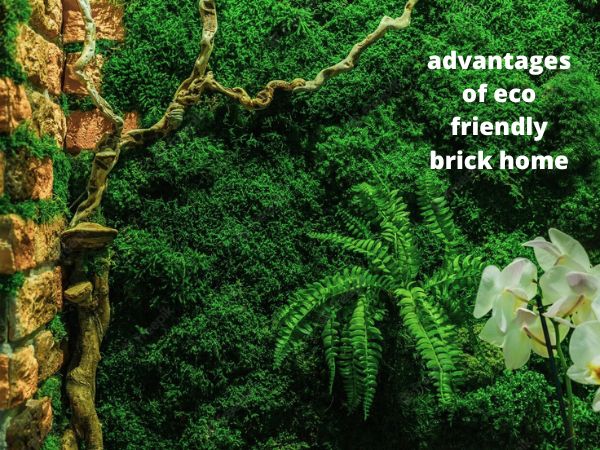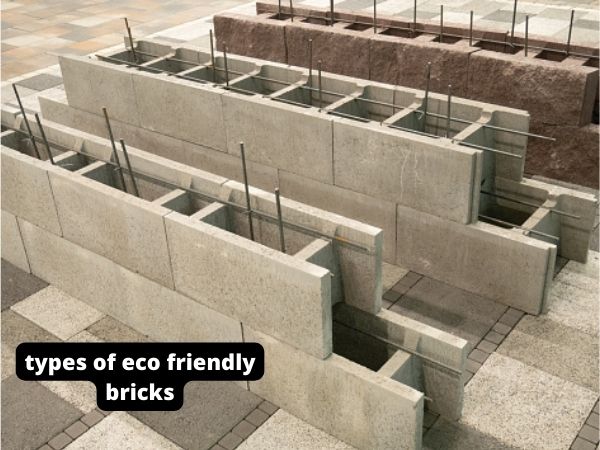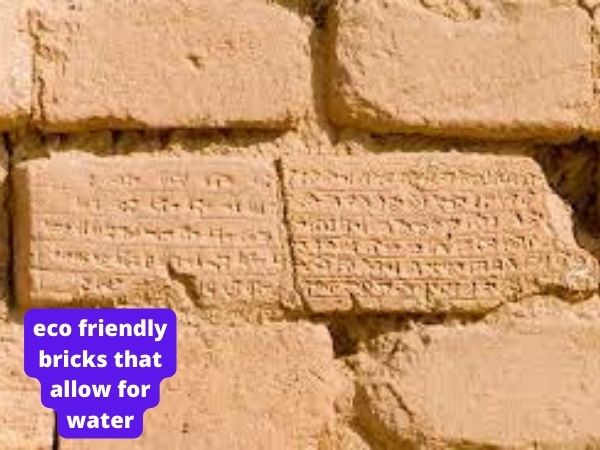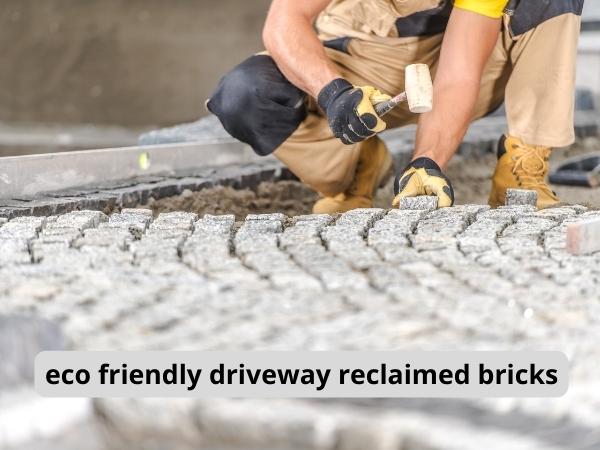eco friendly bricks that allow for water
Today we discuss eco friendly bricks that allow for water. You may not have thought about it, but the bricks that your home or office is built with can have a big impact on the environment. Traditional bricks are made from clay that is fired in a kiln, which uses a lot of energy and emits pollutants into the atmosphere.
Clay is a non-renewable resource, so making traditional bricks is not sustainable. However, there is an alternative – eco friendly bricks. These bricks are made from sustainable materials like straw and fly ash, and they allow for water infiltration, which helps to reduce flooding and soil erosion. So if you’re looking to build a green home or office, be sure to consider eco friendly bricks.

the most sustainable brick:
To assess the sustainability of a brick, it is crucial to consider multiple factors that contribute to its overall impact. These factors encompass resource availability and location, the manufacturing process, and the intended use of the brick. By carefully considering these aspects, it becomes possible to create a brick that embodies sustainable principles.
The lifespan of a brick is a significant determinant of its sustainability. A brick that remains intact for 50 years or more is undeniably more sustainable than one that deteriorates after only 5 years. This extended lifespan reduces the need for replacements, thereby minimizing environmental impact.
Additionally, bricks that can be easily recycled or reused play a vital role in sustainability. Whether they are made from recycled materials like plastic or paper or composed of natural resources like clay and sand, these bricks contribute to a circular economy by minimizing waste and maximizing resource efficiency.
In summary, the most sustainable bricks prioritize longevity and recyclability. Bricks made from natural materials and designed for durability are excellent choices for sustainable construction.
Equally important are bricks made from recycled materials or those that can be easily reused, as they present innovative solutions for waste reduction and promote environmentally conscious building practices.
By considering these factors, we can make informed decisions when selecting bricks that align with sustainability goals.
Facts for sustainable brick:
The energy needed to produce a brick is an important factor in determining its sustainability. Bricks that require less energy are more sustainable than those that require a large amount. The sustainability of a brick can be measured by its carbon emissions, with lower emissions indicating higher sustainability.
There are multiple methods to increase the sustainability of bricks. One approach is to utilize alternative materials like recycled plastic or paper. Another method is to adopt manufacturing processes that consume less energy. Additionally, bricks can be made more sustainable by increasing their lifespan or by ensuring they are easily recyclable or reusable.
The lifespan of eco-bricks:
The energy required for brick production is a crucial factor in determining its sustainability. Bricks that require less energy are more sustainable than those that require a large amount. The sustainability of a brick can be measured by its carbon emissions, with lower emissions indicating higher sustainability.
There are several ways to enhance the sustainability of bricks. One approach is to use alternative materials such as recycled plastic or paper. Another method is to implement manufacturing processes that consume less energy. Additionally, bricks can be made more sustainable by increasing their lifespan or ensuring they are easily recyclable or reusable.

eco friendly bricks that allow for water:
There are numerous eco-friendly bricks that facilitate water seepage, but the most prevalent and favored variety is the clay brick. Clay bricks are fabricated from clay that has been fire-hardened, making it a natural and sustainable material. They are frequently employed in construction due to their durability and low carbon footprint.
Clay bricks have a long lifespan, lasting for many decades, and do not necessitate any chemical treatments to maintain their appearance. Additionally, clay bricks possess excellent thermal properties, enabling them to assist in regulating indoor temperatures.
Bricks from waste materials research paper:
Several research papers have looked at the possibility of using various types of waste material in bricks. Bricks made from waste materials are a promising solution to the problem of disposing of waste materials. The use of waste materials in bricks has several benefits.
It can help to reduce environmental pollution, as well as the amount of waste that ends up in landfills. Additionally, it can be a more cost-effective way to produce bricks, since the raw materials are often cheaper than traditional brick-making materials.
eco-friendly bricks that allow for water and air:
There are several eco-friendly bricks that allow for water and air to pass through them. Some examples include perforated bricks, cellular concrete bricks, and aerated autoclaved concrete (AAC) bricks.
Perforated bricks have small holes drilled through them that allow for water and air to pass. Cellular concrete bricks are made with a gas-forming agent that creates small cells or voids throughout the brick that allow for water and air to pass. AAC bricks are made with a special type of aerated concrete that has small pores throughout it that allow for water vapor and air to pass.

Faqs eco friendly bricks that allow for water:
Answer:
Plastic bricks are certainly more interesting than regular bricks, but whether or not they are better is ultimately up to the individual. Some people prefer the look of plastic bricks, while others find them too gimmicky.
Others appreciate the durability and versatility of plastic bricks, while some find them less solid and reliable than regular bricks. Ultimately, it is a matter of personal preference. There are pros and cons to both kinds of bricks, so it really depends on what you are looking for in a brick.
Answer:
There are some disadvantages of eco-bricks that should be considered before using them in construction projects. The first is that, because they are made of compressed organic matter, they can be susceptible to moisture damage and decay if not properly sealed.
Additionally, eco bricks are not as strong as traditional bricks and may need to be reinforced with other materials for certain applications. Finally, eco bricks can be more expensive than traditional bricks due to the time and effort required to make them.
Final words:
Bricks that can absorb water could provide a more sustainable way to build. The bricks, which are made from a type of clay called Fuller’s earth, are effective at absorbing water and then releasing it slowly. This means that the bricks could help to reduce the amount of water needed for construction projects and could also help to prevent flooding.


